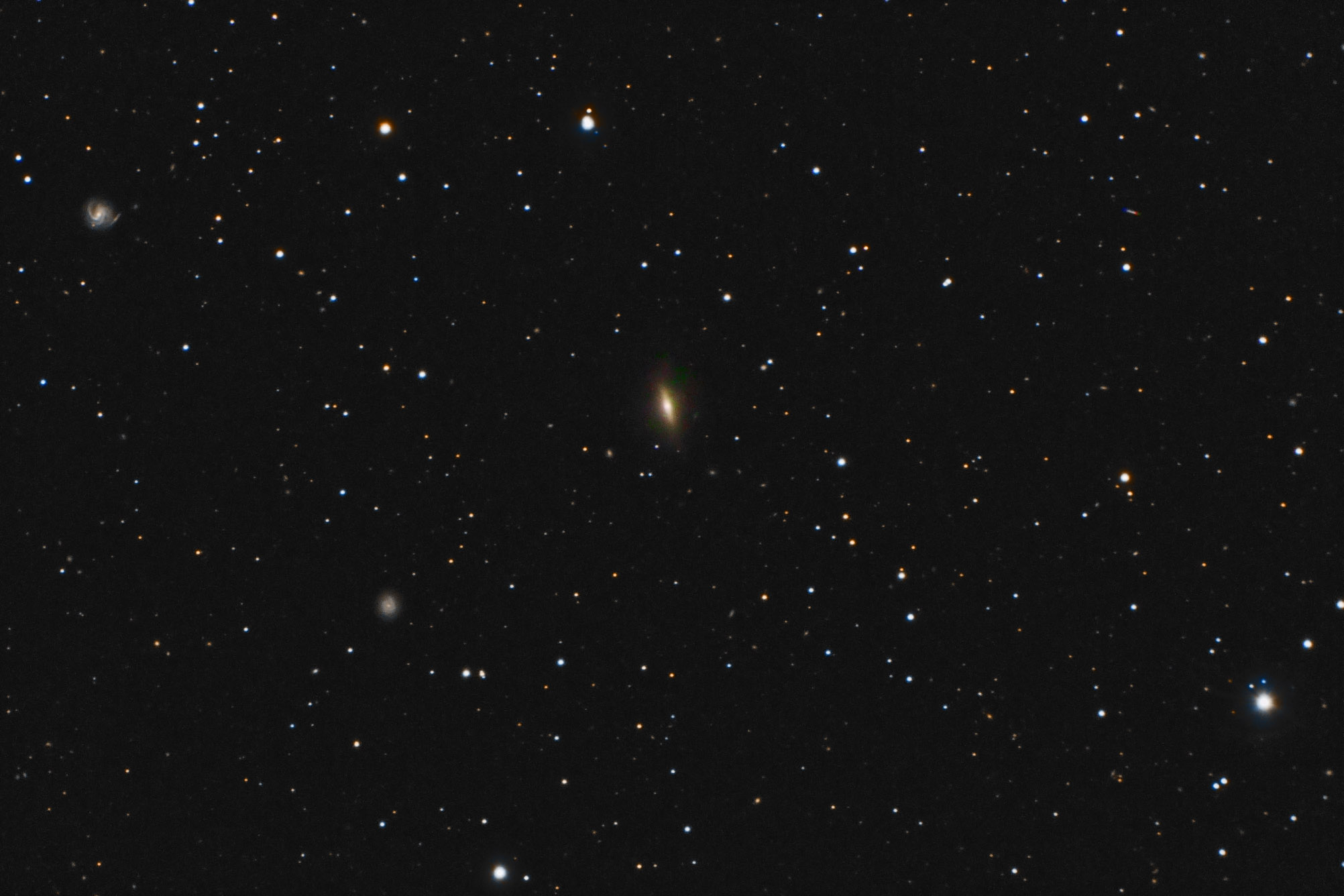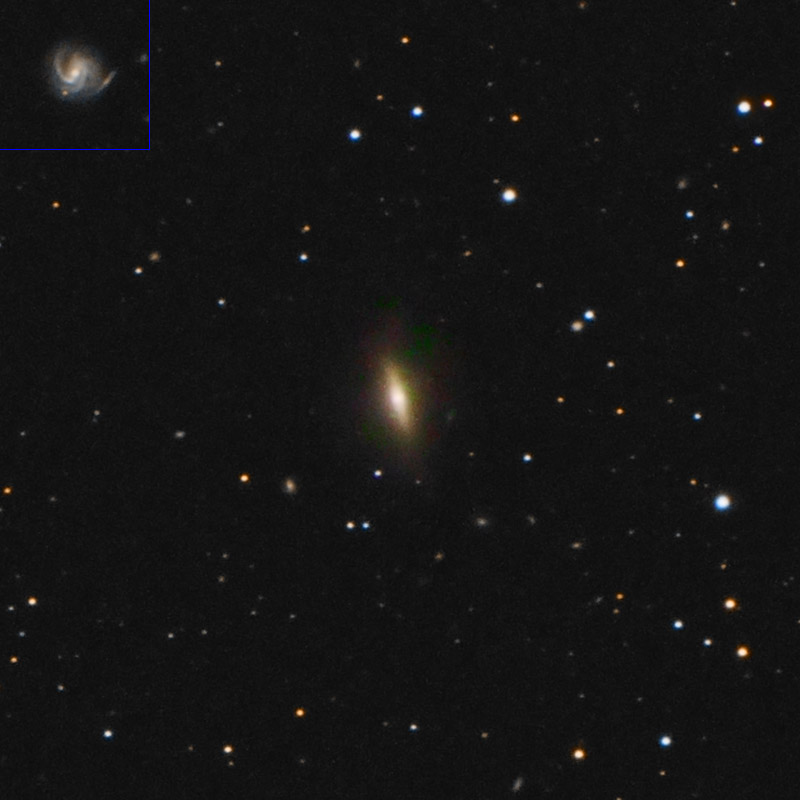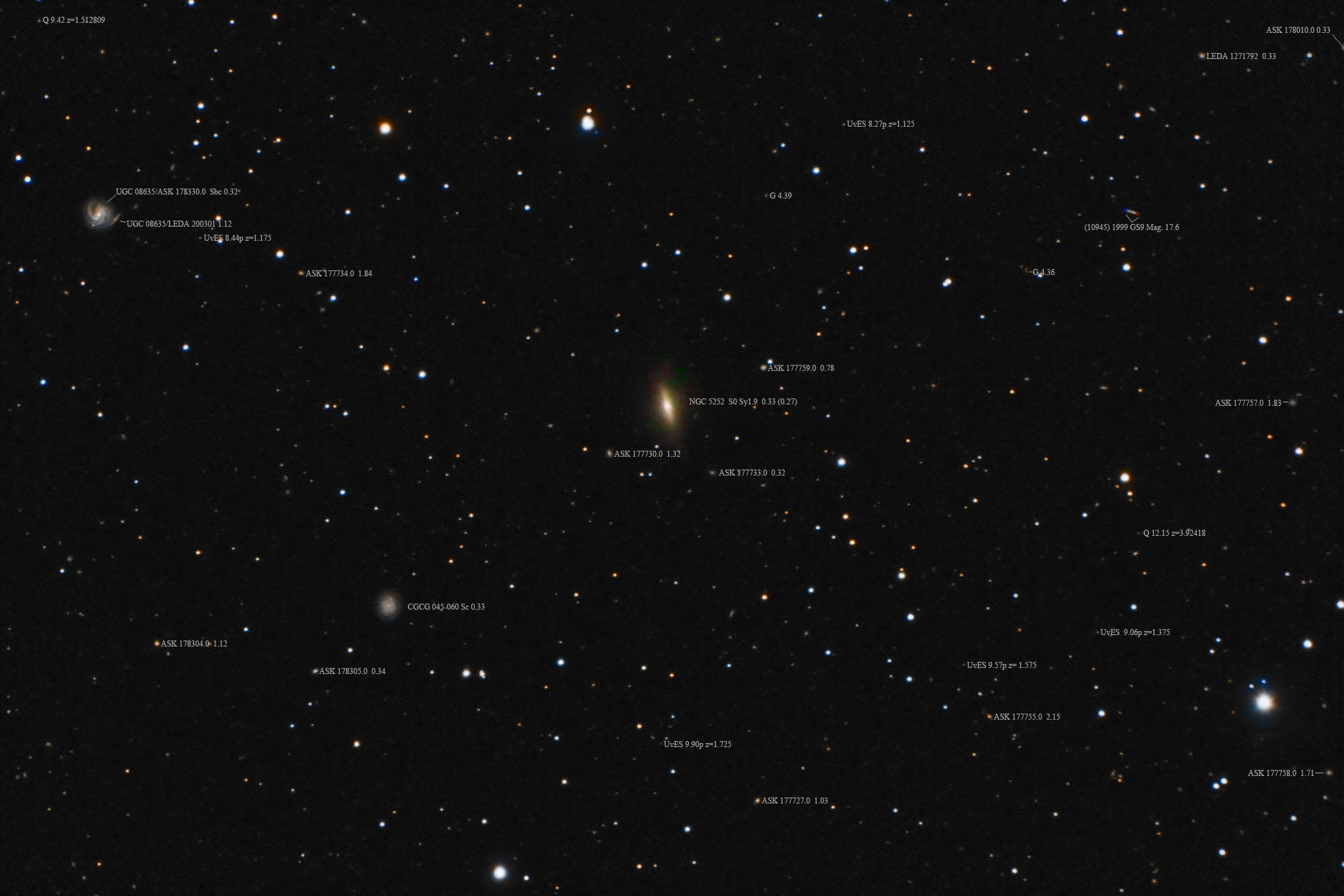| Description | Images |
Object name: NGC5252Designation(s): NGC5252, UGC08635, I made another attempt at a voorwerpjes galaxy. This time NGC 5252 but conditions this night were awful. My sky was 4 times brighter than a previous night when I captured NGC 5972 I posted right after I took it in May. I saw no hint of the structure in the raw images as they came in. But this was because the high background washed it out of the raw images. Once properly calibrated it began to show up. Still, the image is very noisy compared to 5972 and I can't trust some of the green I picked up. It doesn't seem to quite match the HST image location. Though some is out of the HST's limited field of view. ( https://www.spacetelescope.org/images/heic1507f/ Rotated about 90 degrees counterclockwise from my image.) This one needs to be redone but it was too far west by the time I realized this. In fact, it was already too far west when taken, that's why the background was so bright. It was in the light dome of a town of 4000 16 miles to the southwest of my location. Still, some of the structures definitely match. It amazes me what amateur gear can accomplish today. When I started in the mid 50's film couldn't begin to match film at major observatories but digital has helped level the playing field. We just need a lot more time with our smaller scopes. Related Designation(s):2MASX J13381586+0432330, 2PBC J1338.1+0432, 2XMM J133815.8+043233, 2XMMp J133815.8+043233, ASK 177728.0, CGCG 045-056, CGCG 045-061, CGCG 1335.7+0447, CGCG 1336.7+0452, ECO 04221, GALEXASC J133815.91+043231.9 , HDCE 0812 NED006, IGR J13383+0434, IRAS F13366+0452, LDCE 0997 NED008, LQAC 204+004 005, MAPS-NGP O_559_1933636, MAXI J1338+045, MCG +01-35-022, MCG +01-35-024, NGC 5252, NGC5252, NSA 031358, NVSS J133815+043237, PGC 048189, PGC 048273, RESOLVE rs1139, SDSS J133815.86+043233.3, SDSS J133815.87+043233.3, SWIFT J1338.1+0433, SWIFT J1338.2+0433, TOLOLO 1335+047, UGC 08622, UGC 08635, UGC08635, USGC U554 NED09, UVQS J133815.88+043233.6, UZC J133815.9+043233, VV 108, [AHG2014] B199, [BFW78] 48, [BTM2013] 0682, [F80] 17, [KRL2007] 145, [OYS2015] J204.56613+04.54259 , [VCV2001] J133815.9+043233, [VCV2006] J133815.9+043233, [WMR2009] 106, | Permanent link: https://images.mantrapskies.com/catalog/NGC/NGC5252-UGC08635/NGC5252L4X10RGB2X10.JPG |


